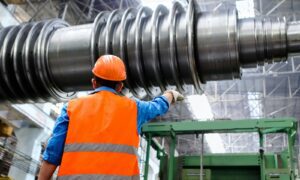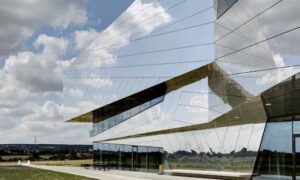Structural engineering in Phoenix, Arizona, is heavily shaped by the area’s extreme climate. The intense heat and seasonal monsoons in Arizona play a major role in how buildings are designed and what materials are used. Addressing these climate challenges is essential to ensure the safety, durability, and efficiency of structures in this region.
In this guide, we will look at how Arizona’s harsh weather affects building materials, the problems caused by monsoons and flash floods, and the difficulties related to soil expansion and contraction. We’ll also discuss how a skilled structural engineer Phoenix can address these challenges, as well as the importance of energy-efficient cooling systems and the need for regular maintenance to reduce weather-related damage.
Heat and Its Effect on Building Materials
Extreme heat significantly impacts building materials, requiring careful selection and specific engineering approaches. High temperatures can cause materials to expand, weaken, or degrade much faster. For example, asphalt softens, leading to quicker deterioration and increased risk of structural damage. Metals, while durable, expand and contract with heat, weakening their structural integrity over time.
Concrete, a widely used material, can crack due to thermal stress if not equipped with proper expansion joints. Insulation materials also lose efficiency under prolonged heat, making it important for engineers to account for these conditions. In cities like Phoenix, where extreme temperatures are common, selecting heat-resistant materials and using specialized construction techniques is essential for ensuring long-term safety and stability.
Dealing with Monsoons and Flash Flooding
Monsoon seasons bring challenges that can seriously damage structures, especially through water damage and flash flooding. Heavy rains quickly soak the ground, raising the risk of erosion and weakening foundations. Engineers must plan for these conditions by using strong drainage systems and flood-resistant materials to reduce the risk of damage.
Flash floods, which happen suddenly and forcefully, can put unexpected pressure on walls and foundations, wearing down materials and causing expensive repairs or, in extreme cases, building collapses. Overall, anticipating and handling these challenges shows the need for innovative methods to protect buildings during monsoons.
Soil Expansion and Contraction
Soil movement caused by temperature changes is a key factor in foundation design and building stability. As temperatures rise and fall, soil expands and contracts, putting pressure on building foundations. This is especially important in places like Phoenix, where extreme heat and occasional cold spells can lead to significant soil shifts. Engineers must design foundations that can handle these movements without risking the building’s safety.
They often use flexible materials and techniques like deep-pile foundations or floating slabs to manage soil expansion and contraction. Knowing how local soil reacts to temperature changes is important for building strong and lasting structures. If not properly addressed, this can lead to cracks, tilting, or even building collapse, highlighting the need for careful planning and innovative foundation solutions.
Energy Efficiency and Cooling Systems
Designing energy-efficient buildings in Phoenix’s scorching summers is a necessity, not just a trend. The intense heat demands strong cooling systems to keep indoor spaces comfortable, making energy efficiency key for both cost savings and environmental impact. Engineers need to use advanced technologies and smart design strategies to reduce energy use while maximizing cooling. Key features include reflective roofing, high-quality insulation, and efficient HVAC systems.
Adding elements like natural ventilation and shading can also lower the cooling demand. Environmentally, using less energy reduces carbon footprints, supporting sustainability goals. Economically, energy-efficient buildings lower operating costs over time, benefiting both owners and occupants.
Long-Term Maintenance and Durability
To ensure buildings last over time, it’s important to think about ongoing maintenance, especially in Arizona’s tough climate. Regular upkeep is key to handling damage from extreme heat, monsoon rains, and water issues. Routine inspections catch early signs of wear, rust, or weak spots, allowing for quick fixes before they become big problems. Using protective coatings, better drainage systems, and heat-resistant materials can greatly extend a building’s life.
Financially, regular maintenance not only helps structures last longer but also cuts down on expensive repairs, saving money in the long run. Additionally, these maintenance practices improve building standards, making future constructions even stronger.
The extreme climate of Phoenix poses significant challenges for structural engineering, requiring innovative solutions to ensure buildings remain safe and durable. Engineers must select heat-resistant materials, design robust drainage systems to handle monsoons, and create flexible foundations to manage soil movement. Additionally, energy-efficient cooling systems are essential to counter the intense heat while reducing operating costs. Regular maintenance plays a key role in extending the lifespan of buildings, minimizing damage from weather-related wear. By addressing these challenges, engineers ensure that Phoenix’s structures are resilient and adaptable to the region’s demanding environmental conditions.



































